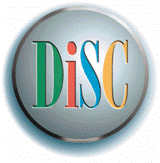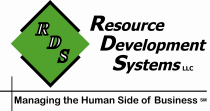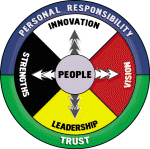The DISC Model

With People being the Central Element for
creating High Performance in your organization (see the Seven
Elements of High Performance™, you need the ability to
understand how and why they behave the way that they do, what
motivates them, and how to engage their behavior to drive
performance. If your organization fails to understand this
critical element, then it will not be a High Performing
Organization.
Whole Person Dynamics gives you a system
to better understand people and help build the positive
relationships necessary for organizational success and
significance. A major part of that system is the DISC
Behavioral Styles Model.
The DISC Behavioral Styles Model can help
you to better understand your employees and customers so you can
master this Core Element. First published in his book "The
Emotions of Normal People" Dr. William Moulton Marston
introduced his theory of behavioral styles that has now become
know as DISC.
DISC Behavioral Styles
DISC is a very simple, yet effective way
of understanding behavior. It is based upon four dimensions of
behavior: Dominance, Influence, Steadiness, and
Conscientiousness (see
an overview of the model here). Each of these four
dimensions has particular behaviors associated with them, and
each of the dimensions exists in all of us. But over time and
based upon what has typically worked for us in a particular
environment, most of us have typically found that a particular
style works better for us and we tend to rely on those
behaviors. The problem is, that style may or may not be
effective for us to be able to get our work done, or to help
others to get their work done. Also, we are working with other
people or serving other people, and their style of behaving may
be different than our style, which can cause conflicts or
misunderstandings. What works for us just may not work for
someone else. That doesn’t mean that anyone is wrong, just that
we are different.
A Different Approach
Many people have probably experienced one
of the many profiles that are often based upon Marston's theory, or a
combination of his theory and Jung. But DISC is much more than
just a profile. It is a comprehensive system that allows people
to interact and talk about behaviors in a non-judgmental
fashion. Behavioral and personality style inventories and
profiles are just simply tools.
While we use DISC based profiles to help
people understand the workings of the DISC Behavioral Styles
Model, our goal is to actually have members of the organization
learn how to utilize the Model and the tools to enhance
performance, communication, customer satisfaction, sales,
efficiency on projects and processes, and just about any other
activity that the organization is engaged in that involves
people interacting with other people, processes, or tasks. If it
involves behavior, then it probably involves DISC.
A Common Language
By utilizing the DISC Behavioral Styles
Model, the organization now has a common language to begin
discussing process and performance issues as they relate to
people, all in a non-judgmental approach. For many people, DISC
represents the first time they have ever been exposed to a
systematic approach for managing human behavior, either their
own or others. It is a system that they can use to build their
own process of structured inquiry for solving problems and
enhancing performance.
The DISC Behavioral Styles Model provides
the operating instructions for humans that most people have been
looking for all of their lives. Now people can understand why
they don’t like performing certain tasks required of their job,
yet can excel at others. They can understand why co-workers can
behave in certain ways that would be uncomfortable for them to
behave in the same manner. The DISC Behavioral Styles Model now
allows people to be able to not just communicate better, but
begin to understand each other a little better, as they are now
all using the same language; the language of DISC.



